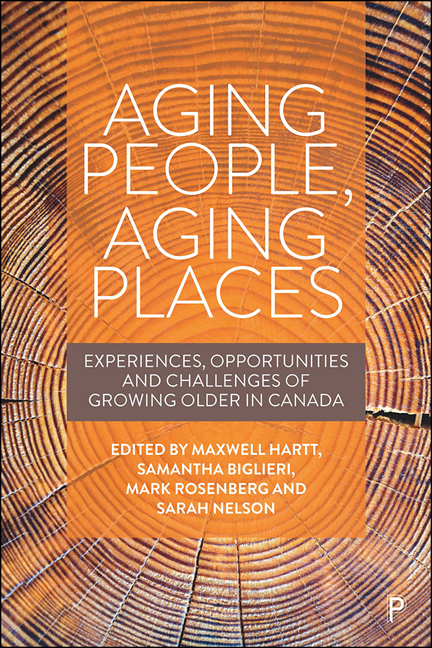16 - Aging in Indigenous Canada
Published online by Cambridge University Press: 18 December 2021
Summary
Older Indigenous people are in a unique position within what is now Canada. With relationships to place that extend over millennia and shape the ways that communities are structured, as well as the ongoing challenges and oppressions of living within a colonial society that regulates much of everyday life and limits opportunities in many Indigenous communities, aging for Indigenous individuals has multiple layers of complexity that involve both opportunities and challenges, and that relate closely to the places in which people live.
‘Indigenous peoples’ is an umbrella term, used internationally to refer to the original peoples of a place. In Canada, ‘Indigenous peoples’ include over 70 distinct language groups and hundreds of different nations (Statistics Canada, 2017). In Canada, the Constitution Act recognizes three main Indigenous groups: First Nations, Métis, and Inuit (Government of Canada, 1982), although each of these groups masks a huge amount of diversity, and Indigenous peoples generally prefer to be identified by nation, such as Cree, Mi’kmaq, or Omamiwinnini – rather than as part of these larger groupings. The 2016 Census counted 1,673,785 Indigenous people in Canada, a number that grew by 42.5% since 2006, and Indigenous peoples now make up at least 4.9% of the overall population of Canada (Statistics Canada, 2017).
While the Indigenous population in general is younger than non-Indigenous populations in Canada, the proportion of Indigenous people aged 65 years or older is also increasing more quickly than in other populations, rising from 4.8% in 2006 to 7.3% in 2016 (Wilson et al, 2010, 2011; Statistics Canada, 2017) (Figure 16.1). This is giving rise to scholarship on a number of issues for older and aging Indigenous people, including urbanization and relationships to land (Wilson and Cardwell, 2012); health disparities and experiences of dementia and memory loss (see Chapter 17, this volume; Hulko et al, 2010; Wilson et al, 2010; Lanting et al, 2011; Bourassa et al, 2015; Warren et al, 2015); and the provision of services in culturally appropriate ways that also account for the different, sometimes challenging, geographies of Indigenous aging in Canada (see Chapters 18, 19, and 20, this volume). These issues give rise to a number of challenges for Indigenous communities, but also to a number of opportunities for older Indigenous people and those working with them, going forward.
- Type
- Chapter
- Information
- Aging People, Aging PlacesExperiences, Opportunities and Challenges of Growing Older in Canada, pp. 197 - 204Publisher: Bristol University PressPrint publication year: 2021

